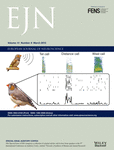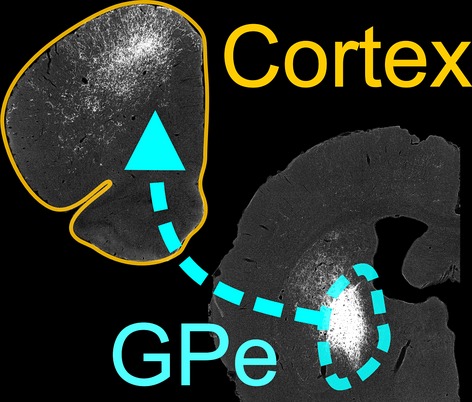Journal list menu
Export Citations
Download PDFs
Issue Cover
Issue Cover (March 2015)
- First Published: 16 March 2015
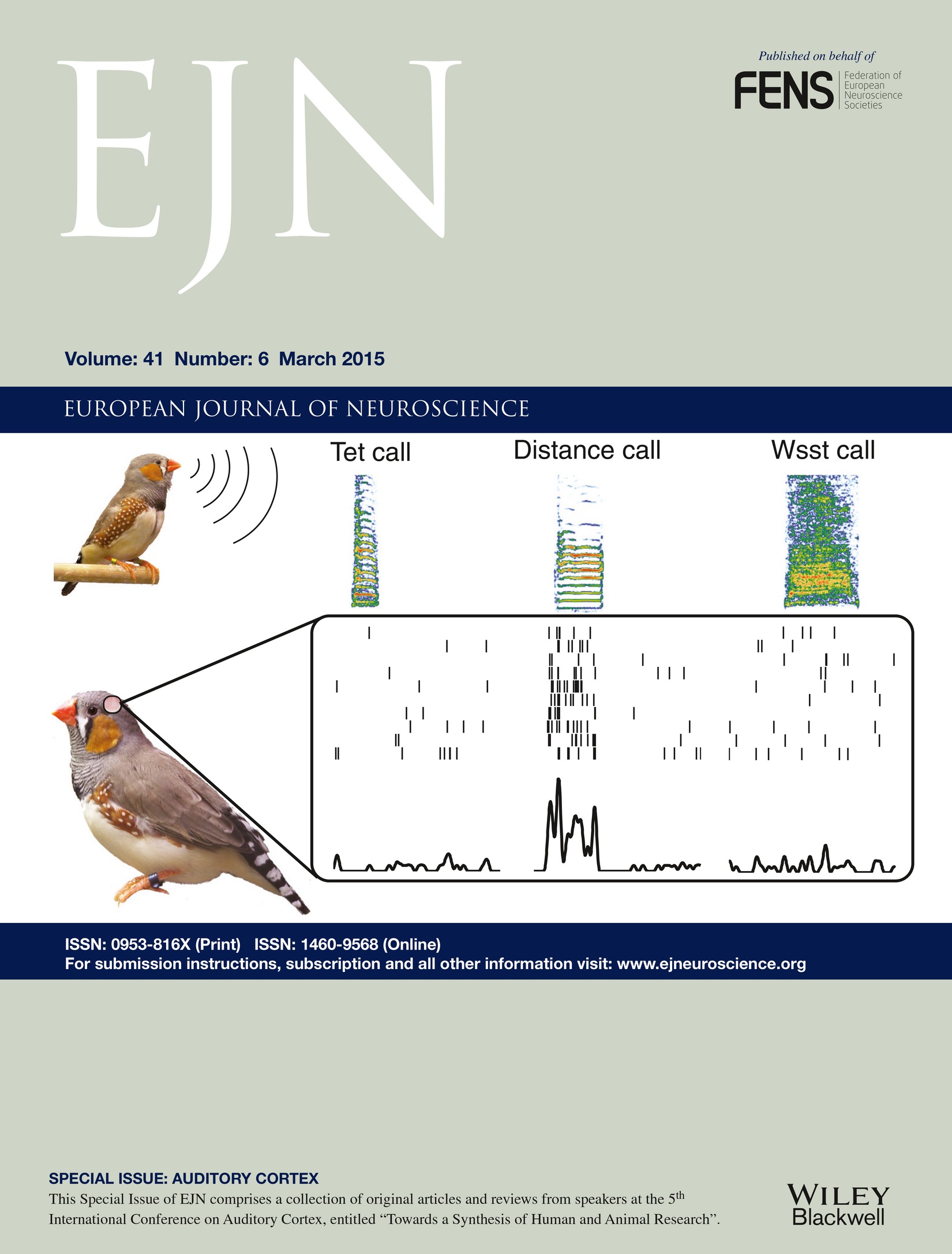
Cover Illustration: Neuroelectrophysiological activity recorded in the avian auditory cortex of zebra finches in response to conspecific vocalizations that have different meanings. The top row shows the spectrogram of the vocalizations, the middle section the spike rasters obtained for 10 presentations of that same sound, and the bottom row the Post Stimulus Time Histogram (PSTH) or average spike response in number of spikes per ms. PSTH values ranges between 0 and 100 spikes per ms for the example cell. This cell shows selective response for one category of vocalizations, the Distance call. For details see the article of Elie & Theunissen (Meaning in the avian auditory cortex: neural representation of communication calls. Eur. J. Neurosci., 41, 546–567).
NEUROSYSTEMS
Type 2 wide-field amacrine cells in TH::GFP mice show a homogenous synapse distribution and contact small ganglion cells
- Pages: 734-747
- First Published: 29 December 2014
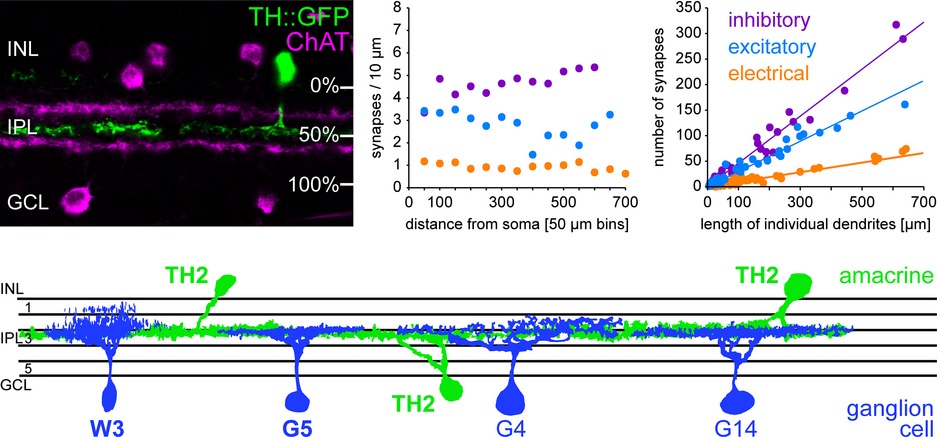
In the retina of tyrosine hydroxylase (TH)::GFP mice, GFP-expressing type 2 amacrine cells (TH2) are characterized by short and long radial processes, stratifying in the middle of the inner plexiform layer. Here, we show that electrical, excitatory and inhibitory synapses are uniformly distributed along TH2 cell dendrites. We reveal that TH2 cells provide postsynaptic inhibition to several types of ganglion cells; one of them is the W3 cell, a ganglion cell sensitive to object motion.
Identification of a direct GABAergic pallidocortical pathway in rodents
- Pages: 748-759
- First Published: 08 January 2015
Glutamatergic and dopaminergic neurons in the mouse ventral tegmental area
- Pages: 760-772
- First Published: 09 January 2015
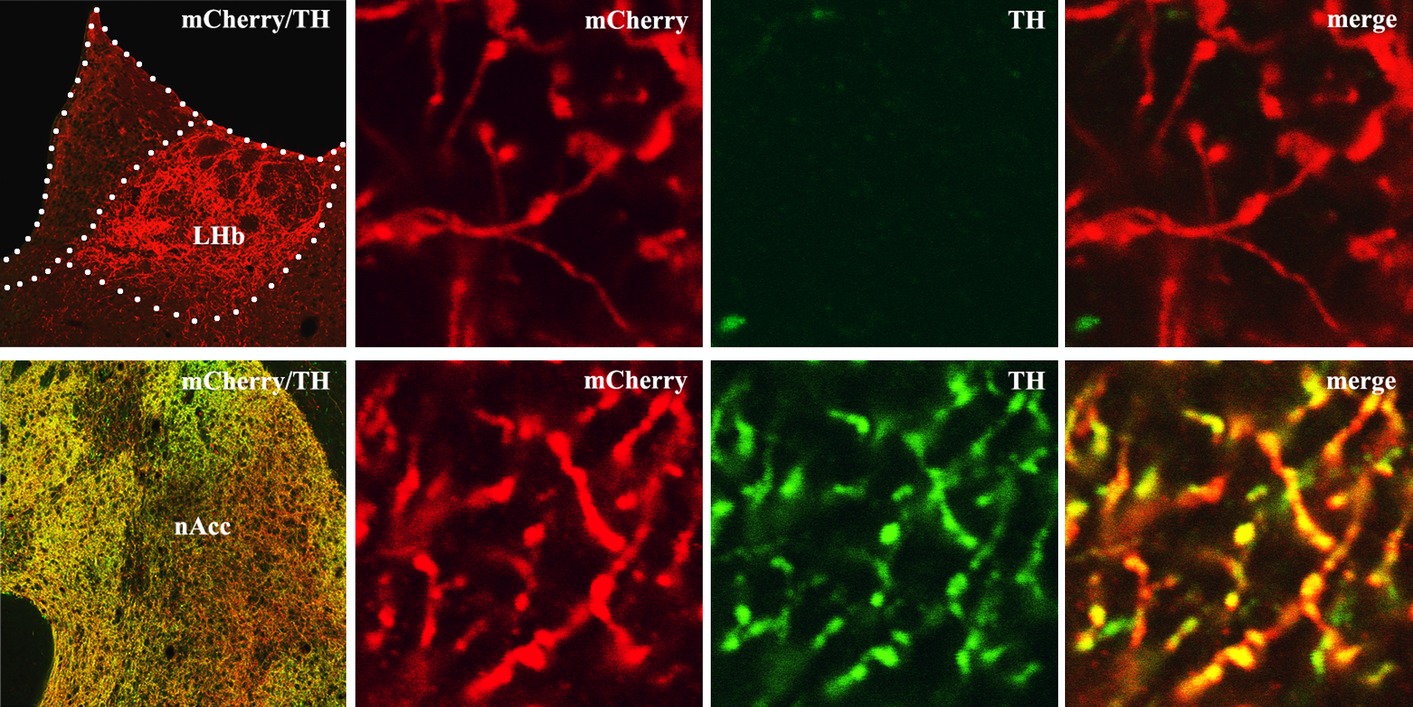
Unlike the A10 area of the rat, the mouse A10 area contains a group of TH and VGluT2/TH neurons that do not seem to synthesize dopamine in the adult under normal conditions, as they lack detectable levels of TH protein. By double immunofluorescence, we found mesohabenular fibers expressing mCherry under the TH promoter contain high levels of mCherry signal, but lack detectable levels of TH protein, indicating that the lateral habenula is targeted by TH mRNA(+)/TH protein(−) neurons. In contrast, the A10 innervations to the nucleus accumbens containing mCherry also contained TH-protein.
BEHAVIORAL NEUROSCIENCE
Differential contributions of de novo and maintenance DNA methyltransferases to object memory processing in the rat hippocampus and perirhinal cortex – a double dissociation
- Pages: 773-786
- First Published: 30 December 2014
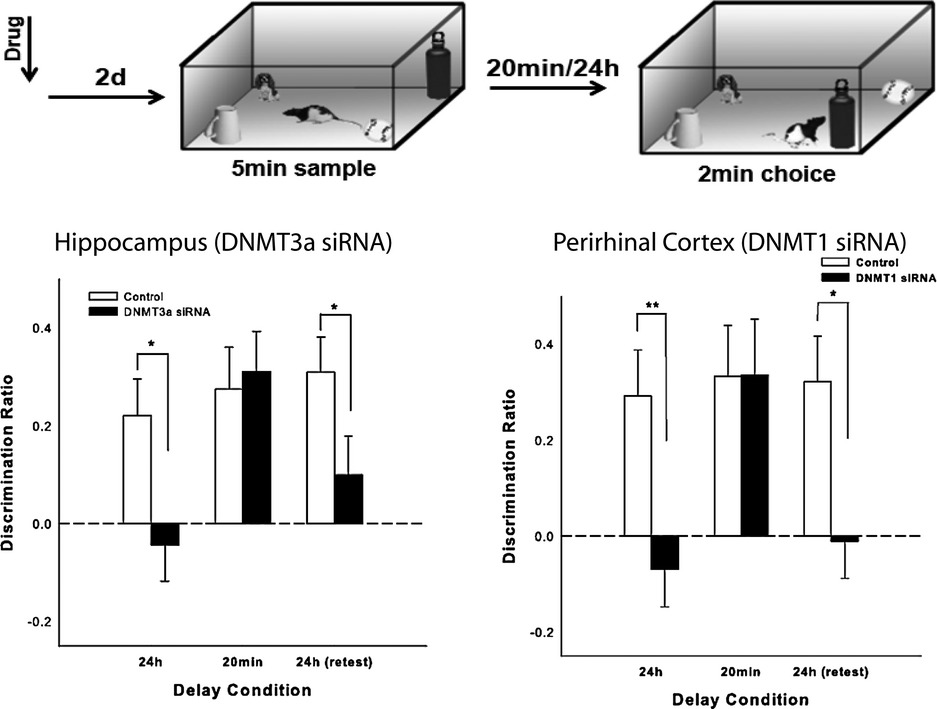
This study has demonstrated, for the first time, the involvement of DNA methyltransferase enzymes in perirhinal cortex-mediated memory. Furthermore, we reveal a functional double dissociation between the maintenance and de novo DNA methyltransferase families in perirhinal cortex- and hippocampus-mediated object memory, respectively. We hypothesize that these enzymes differentially regulate memory consolidation in these regions for two distinct forms of memory.
Diurnal and stress-induced intra-hippocampal corticosterone rise attenuated in 11β-HSD1-deficient mice: a microdialysis study in young and aged mice
- Pages: 787-792
- First Published: 23 January 2015

The diurnal rise in intra-hippocampal corticosterone (CORT) levels in wildtype mice increased with ageing but was greatly diminished in 11β-HSD1−/− mice. A short swim stress induced a greater rise in intra-hippocampal CORT levels in wildtype than 11β-HSD1−/− mice; effects were more pronounced with ageing. These data indicate that 11β-HSD1 activity contributes substantially to diurnal and stress-induced increases in hippocampal CORT levels.
Activation of the mouse odorant receptor 37 subsystem coincides with a reduction of novel environment-induced activity within the paraventricular nucleus of the hypothalamus
- Pages: 793-801
- First Published: 24 January 2015
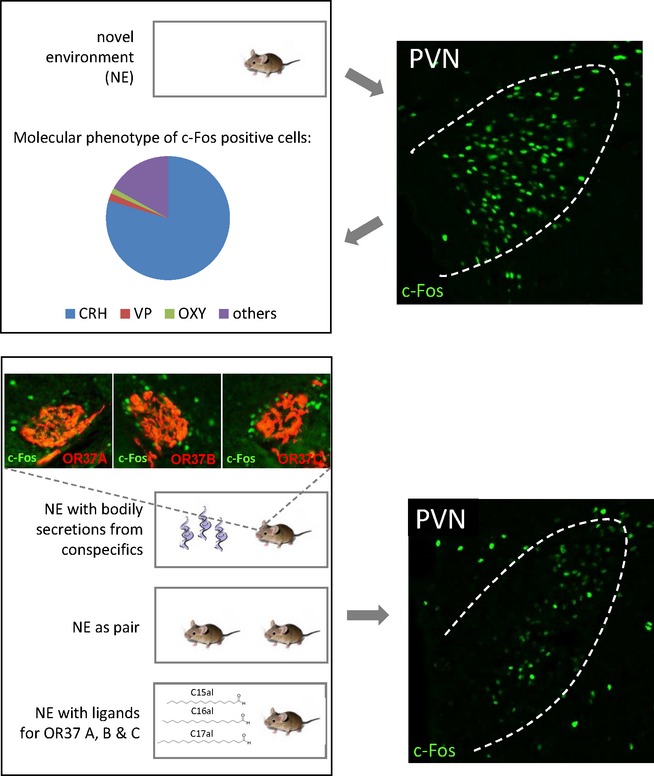
Secretions from conspecifics modulate the novel environment (NE) induced activity of CRH-producing neurons in the paraventricular nucleus of the mouse hypothalamus. This stress-reducing effect can also be elicited by identified chemical compounds that are detected by a special subfamily of odorant receptors (OR37) in the main olfactory epithelium. These data indicate that the OR37 system may play a role in mediating a phenomenon called social buffering.
Nucleus accumbens shell and core dopamine responsiveness to sucrose in rats: role of response contingency and discriminative/conditioned cues
- Pages: 802-809
- First Published: 03 February 2015
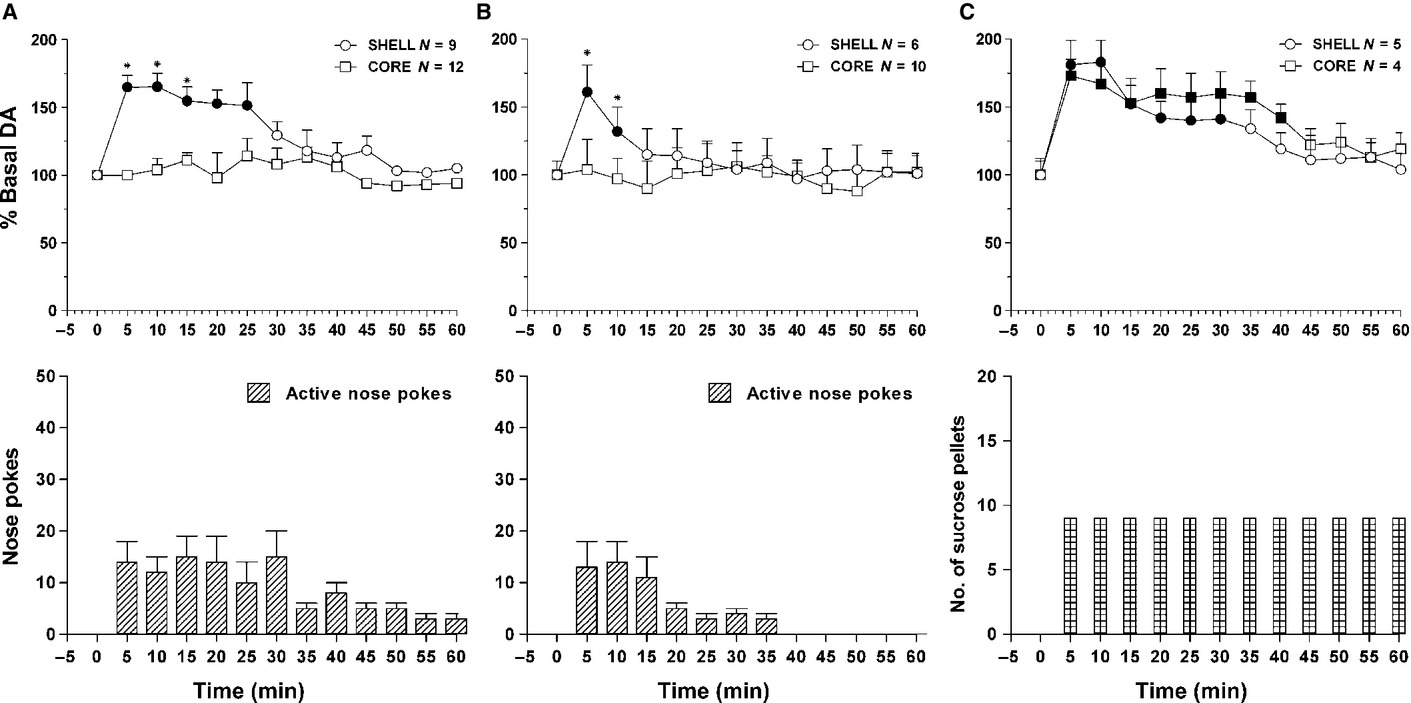
The main goal of this study was to investigate the role of sucrose-related cues and response contingency in the responsiveness of NAc shell and core DA transmission. Learning of responding for sucrose involves build-up of activation of shell and suppression of core dopamine responsiveness. This apparent loss of habituation of shell dopamine under response contingent sucrose feeding might involve a shift from primary to conditioned stimuli as determinants of accumbens shell dopamine activation.
COGNITIVE NEUROSCIENCE
Binding body and self in visuo-vestibular conflicts
- Pages: 810-817
- First Published: 30 December 2014
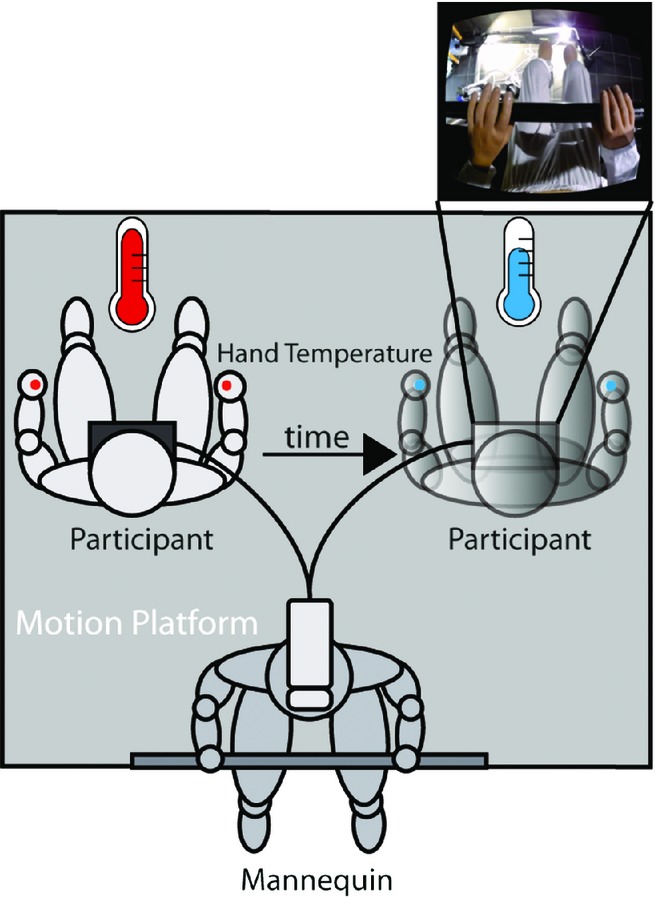
Vestibular signaling and its multisensory integration are crucial for the sense of a bodily self. Here we showed that moving on a motion platform congruently with a mannequin seen from a first person perspective cools down skin temperature. This suggests that conflicting visuo-vestibular input alters thermoregulation as an implicit measure of body ownership.
Interests shape how adolescents pay attention: the interaction of motivation and top-down attentional processes in biasing sensory activations to anticipated events
- Pages: 818-834
- First Published: 26 December 2014
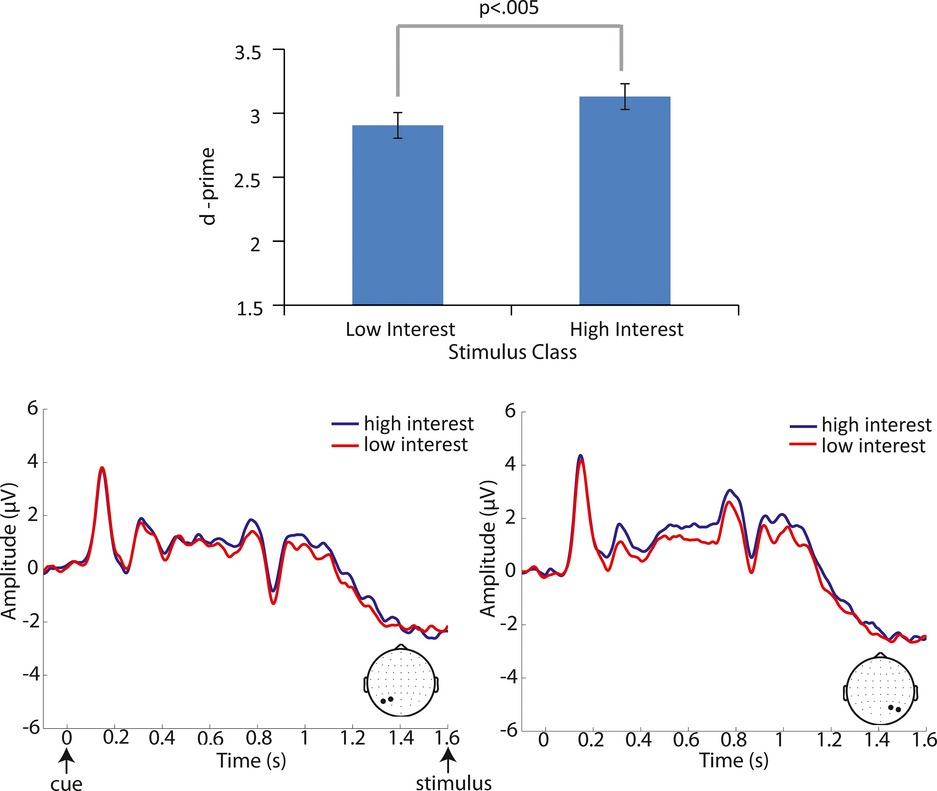
This work examined the influence of level of interest in anticipated stimuli on established ERP indices of spatial attention in adolescents. Results showed significantly greater accuracy in target detection for high versus low interest stimuli, as well as enhanced amplitude in parieto-occipital processes related to anticipatory spatial attention. This provides a foundation for future work with developmentally disabled populations using level of interest in stimuli as incentive to potentially regulate atypical attentional processes.
Exploration of the dynamics between brain regions associated with the default-mode network and frontostriatal pathway with regards to task familiarity
- Pages: 835-844
- First Published: 24 January 2015
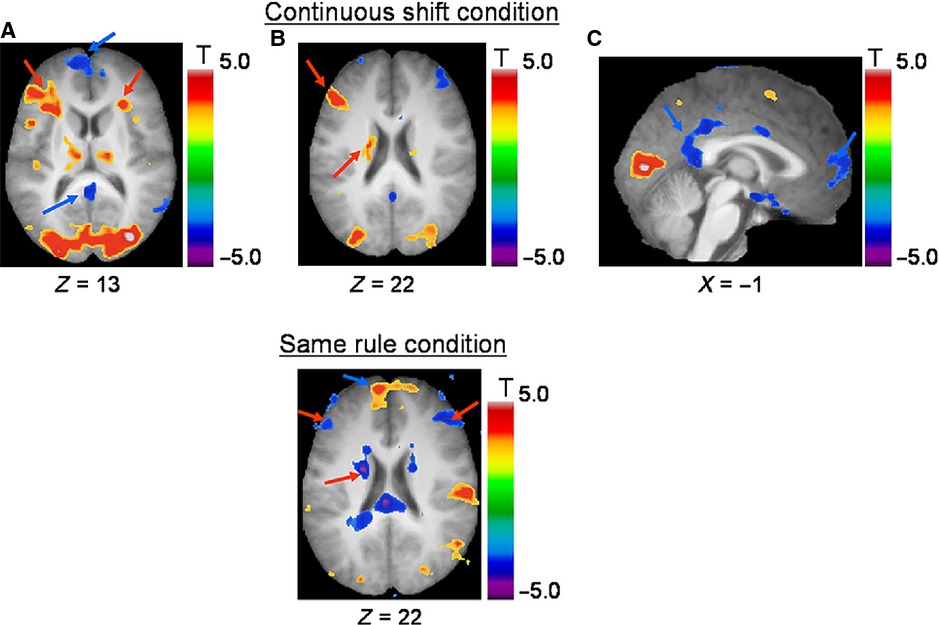
The default-mode network is known to be deactivated when a goal-directed task is being performed. Using functional magnetic resonance imaging, we observed an anticorrelation between the frontostriatal pathway and the regions associated with the default-mode network while performing a set-shifting task. More importantly, a significant increase of activity of the default-mode network was observed as the number of trials executing the same rule increased suggesting a specific contribution of the default-mode network with the level of familiarity of a goal-directed task.
Parietal transcranial direct current stimulation modulates primary motor cortex excitability
- Pages: 845-855
- First Published: 03 February 2015
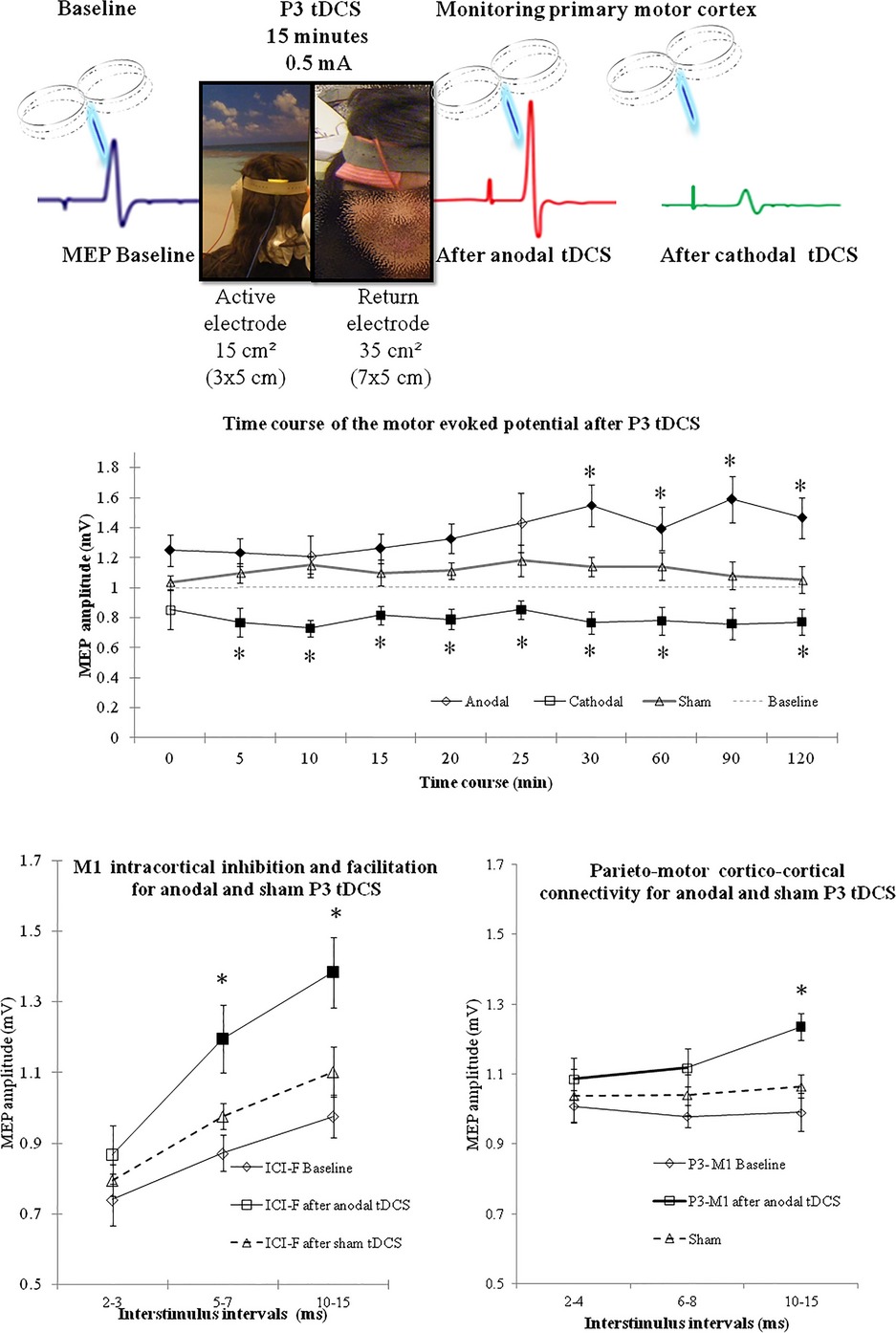
Posterior parietal tDCS induces polarity-dependent M1 excitability changes. Anodal stimulation enhances M1 cortico-spinal excitability, and increases M1 intracortical facilitation and parieto-motor cortical excitability, whereas cathodal tDCS reduces M1 cortico-spinal excitability and the parieto-motor cortical excitability. The cortico-spinal excitability changes remain at least 120 min after stimulation. The results suggest a relevant connectivity-driven neuroplastic effect of posterior parietal tDCS on M1 excitability.
Spatio-temporal response properties of local field potentials in the primate superior colliculus
- Pages: 856-865
- First Published: 06 March 2015
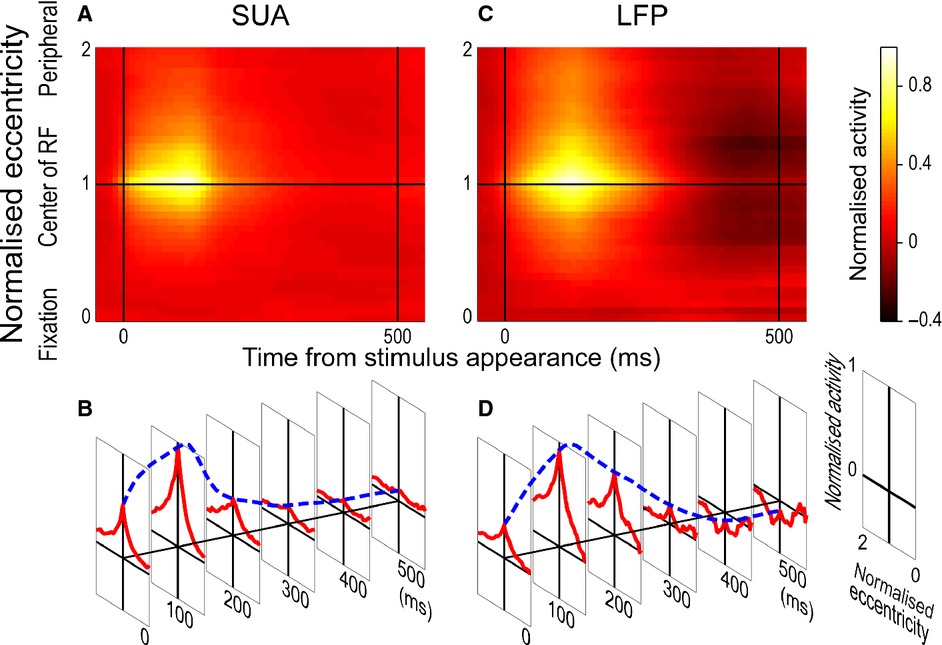
We recorded single unit activity (SUA) and local field potentials (LFPs) simultaneously from the Superior Colliculus (SC) of behaving non-human primates. We found that signal properties of SUA (A&B) were well preserved in the LFPs (C&D) spatially (Ordinate) and temporally (Abscissa). On the other hand, LFPs showed significant reversal of activity following the initial phasic visual response, which cannot be observed in SUA, suggesting suppression in the SC.
CORRIGENDUM
The complex relationship between the food-entrainable and methamphetamine-sensitive circadian oscillators: evidence from behavioral studies of Period mutant mice
- Page: 866
- First Published: 16 March 2015




